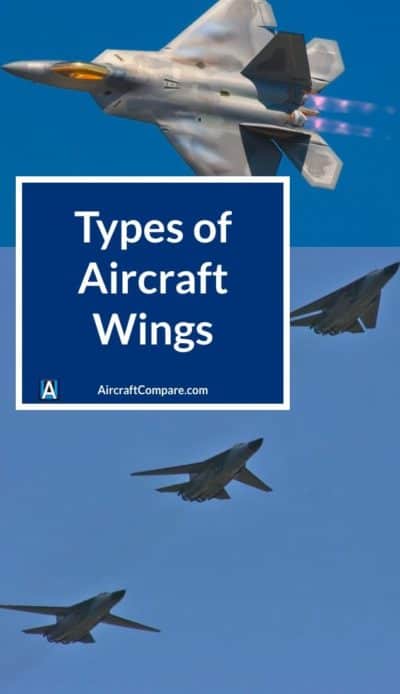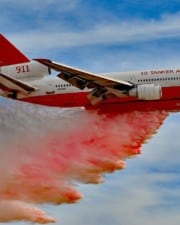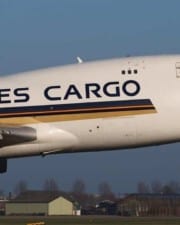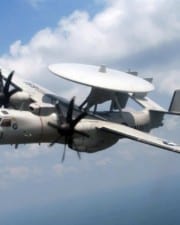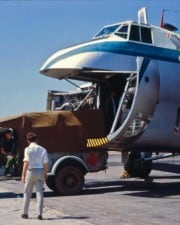Over the years, countless wing configurations have been tried and tested. Few have been successful. Learn about the different types of aircraft wing configurations and see how each wing type differs from the other, as well as the pros and cons of each.
Table of Contents
Aircraft wings are airfoils that create lift when moved rapidly through the air. Aircraft designers have created a variety of wings with different aerodynamic properties. Attached to the body of an aircraft at different angles, these wings come in different shapes.
If you are fond of airplanes or interested in learning how planes fly, you may want to learn about different types of aircraft wings or propellers used in aircrafts. So to help you out, we are going to discuss some wing configurations, wing structure and some common types of aircraft wings.
Wing Configurations
Wing configurations vary to provide different flight characteristics. The amount of lift an aircraft generates, control at different operating speeds, stability and balance all change as the aircraft wing’s shape is changed.
Both the trailing edge and the leading edge of an aircraft wing may be curved or straight or one edge might be curved and the other straight. One or both edges of an aircraft wing can be tapered so that it is narrower at the tip. The wing tip can be pointed, rounded or square.
Aircraft wings may be attached at the bottom of the fuselage, mid-fuselage or at the top. They might extend perpendicular to the fuselage’s horizontal plain or can angle down or up slightly. This angle is called the wing dihedral angle and it affects the aircraft’s lateral stability.

Wing Structure
Aircraft wings lift it into the air. The particular design of the wings for any aircraft depends on several factors including the desired speed at takeoff, landing and in flight, the desired rate of climb, use of the airplane, and size and weight of the aircraft.
Aircrafts wings are often of complete cantilever design. What this means is that they are built in such a way that they don’t require any external bracing. They are internally supported by structural members and the aircraft’s skin.
In some aircraft wings, external wires or struts are used to support the wing and carry the landing and aerodynamic loads. Wing support struts and cables are mostly made from steel.
Short, almost vertical supports referred to as jury struts are often found on struts that are attached to the aircraft wings at a significant distance from the plane’s fuselage. They subdue strut oscillation and movement caused by the air that flows around the strut during flight.

Wings are mostly constructed using aluminum but they can also be made using wood covered with fabric. Some aircrafts wings are made using a magnesium alloy. In modern aircrafts, stronger and lighter materials are used in wing constructions and throughout the airframe.
Wings made of carbon fiber also exist and there are also aircraft wings that are made using a combination of materials to provide maximum strength.
The internal structures of aircrafts wings are usually made of stringers and spars running spanwise and formers or bulkheads and ribs running chordwise – leading edge to trailing edge.
Spars are important structural members of an aircraft wings. They support distributed loads and concentrated weights like the landing gear, engines, and fuselage.
The skin carries part of the load imposed during flight. It is also responsible for transferring the stress to wing ribs.
Types of Aircraft Wings
1. Rectangular Wing

The rectangular wing is the simplest to manufacture. It is a non-tapered, straight wing that is mostly used in small aircrafts. This wing extends out from the aircraft’s fuselage at right angles (approximately).
A good example of an aircraft where a rectangular wing was used is the Piper PA 38. One major disadvantage of a rectangular wing is that it isn’t aerodynamically efficient.
2. Elliptical Wing
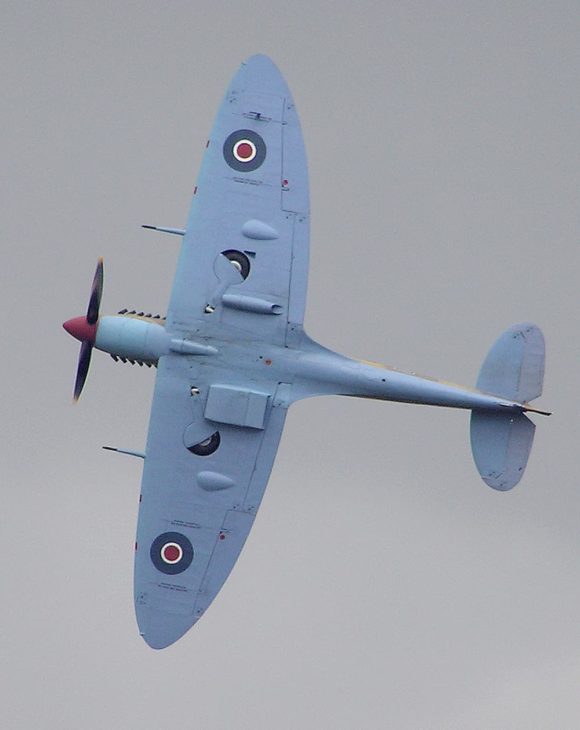
The elliptical wing is aerodynamically most efficient because elliptical spanwise lift distribution induces the lowest possible drag. However, the manufacturability of this aircraft wing is poor. One of the most famous aircrafts in which elliptical wing was used is the Supermarine Spitfire that ruled the skies during the Battle of Britain.
The elliptical wing wasn’t originally designed to minimize drag induction, but rather it was made to house the landing gear along with ammunition and guns inside a wing. So, the wing had to be thin.
The ellipse was the shape that allowed for the thinnest possible wing, giving room inside to hold the necessary things. In aircrafts like the Seversky P-35, we can see a semi-elliptical wing that has a trailing or leading edge elliptical.
3. Tapered Wing

The tapered wing was designed by modifying the rectangular wing. The chord of the wing is varied across the span for approximate elliptical lift distribution.
While it isn’t as efficient as the standard elliptical wing, it does offer a compromise between efficiency and manufacturability.
The P-51 Mustang, which was utilized by the USAAF to fight against the Luftwaffe used the tapered wing.
4. Delta Wing

This low aspect ratio wing is used in supersonic aircrafts. The main advantage of a delta wing is that it is efficient in all regimes (supersonic, subsonic, and transonic). Moreover, this type of wing offers a large area for the shape thereby improving maneuverability and reducing wing loading.
The delta wing doesn’t just offer efficient flight experience but is also strong structurally and provides large volume for fuel storage. This wing is also simple to manufacture and maintain.
However, like any other type of aircraft wing, delta wing also has some disadvantages. The main disadvantages of this aircraft wing include:
- Due to their low aspect ratio, delta wings induce high drag.
- At low speed – during landing and takeoff –, these wings have a high angle of attack mainly because, at such low speeds, vortices generate the lift. High stall angles of the delta wings compensate for this.
The Dassault Mirage 2000 is a prime example of an aircraft which uses tailless delta wings. Some aircrafts use tailed delta wings and one of the most famous of those aircrafts is the Russian MiG-21.

Another variant of delta wing is the cropped delta and it is seen in the Eurofighter Typhoon T1. The tips of this variant are cut off for reducing drag at low speeds.
Another variant of delta wings which is popularly used in combat aircrafts is the double delta. Leading edge angle of the double data isn’t constant but has two values. The light combat aircraft of India known as ‘Tejas’ uses double data wings.
5. Trapezoidal Wing
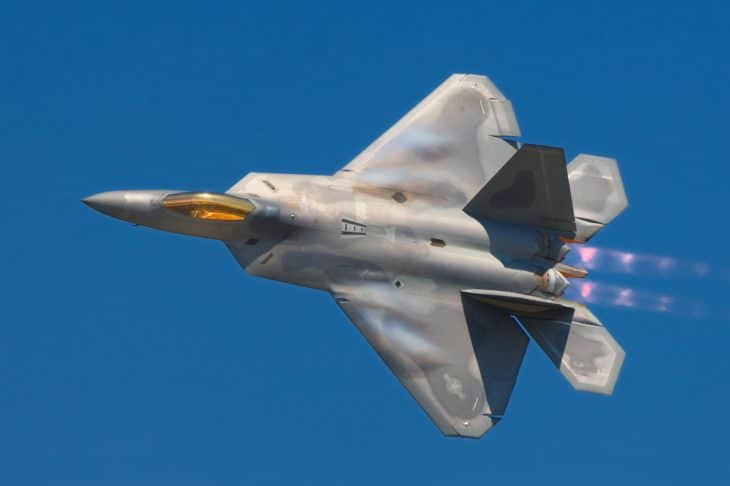
The trapezoidal wing design offers outstanding flight performance. The trailing edge of the wing sweeps forward while the leading edge sweeps back. This type of wing is commonly used in U.S. combat aircrafts.
This configuration offers highly efficient supersonic flights and has good stealth characteristics. The only problem is that the wing loading is high which results in reduced maneuverability. The trapezoidal wing is used in the famous F-22 Raptor jet.
6. Ogive Wing
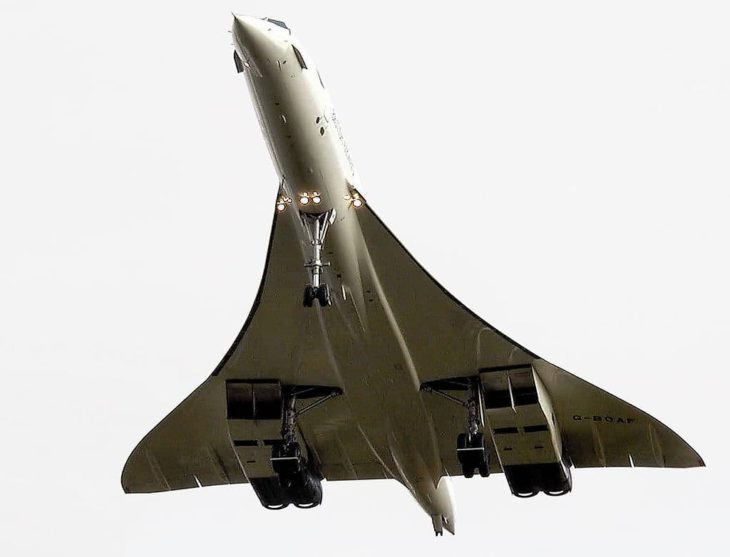
The ogive wing design is used in very high-speed aircrafts. The complex mathematical shape of this aircraft wing is derived to minimize drag at supersonic speeds. Ogive wings offer excellent performance at supersonic speeds with minimal drag.
The main disadvantage of these types of aircraft wings is that they are very complex and manufacturing them is difficult. Moreover, their subsonic performance isn’t satisfactory in comparison. The retired Aerospatiale-BAC Concorde used ogive wings.
7. Swept Back Wings
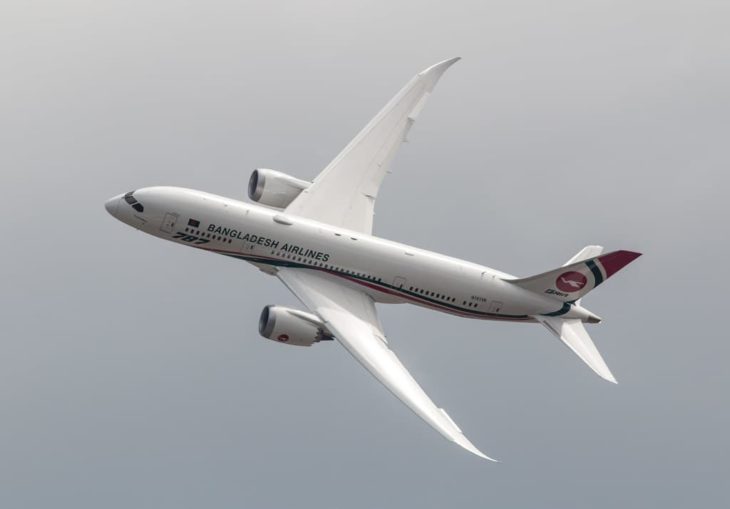
The aircraft wings whose leading edges are swept back are called swept back wings. Swept back wings reduce drag when an aircraft is flying at transonic speeds.
The majority of high-speed commercial aircrafts use swept back wings. Boeing 787 Dreamliner is one example out of many that uses swept back wings.
8. Forward-Swept Wings

The aircraft wings whose leading edges are swept forward are called swept forward wings. One disadvantage of this type of configuration is that because of the flow characteristics of the wings, the outboard wings stall before the flaps. This can cause controllability issues. Swept forward wings were therefore only used in very few aircraft, like the Grumman X-29 Switch Blade.
The main issue that made this type of wing configuration unsuitable was that it produced wing twisting when it bent under load, putting greater stress on wing roots. The Sukoi Su-47 Berkut is one of the very few aircraft that used this wing.
9. Variable Sweep Wings
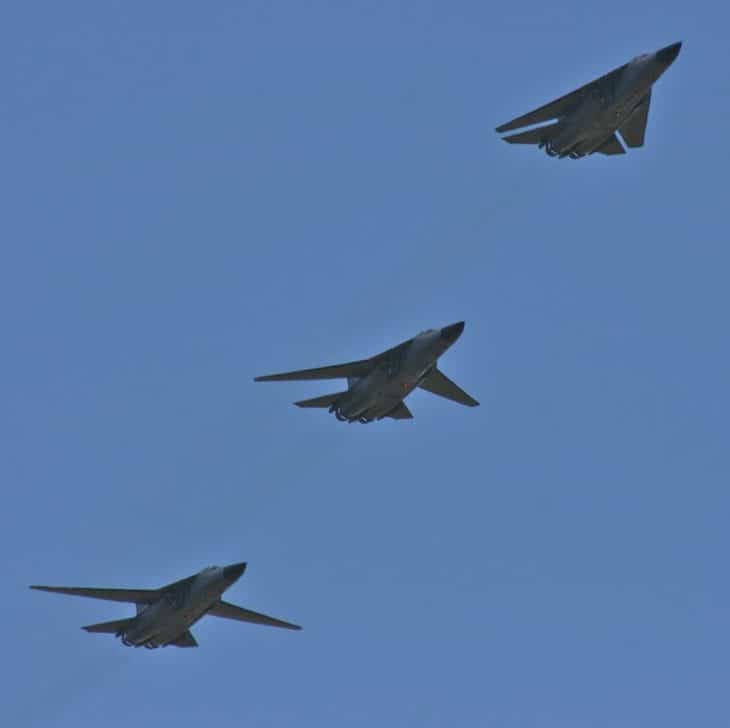
Swept wings are mostly suitable for high speeds, like supersonic and transonic, while unswept wings work best for low speeds i.e. subsonic. Variable sweep wings were designed to optimize flight experience over a range of speeds.
The mechanical complexity is the main issue with this aircraft wing. General Dynamics F-11 Aardvark is the first aircraft that used variable sweep wings.
I hope you’ve enjoyed this collection of types of aircraft wings. Did I miss anything? Any incorrect info? Let me know in the comments!
Related Posts

